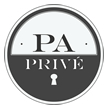The destination options are endless, and it can be done as a group or individual trip. A valuable tip to a successful travel program is to plan each trip with great care.
Follow a few of these tips below to help plan a suitable travel program for your company:
Click here for our guide on how to improve communication skills
Incentive Programmes…
• Are proven to increase performance
• Consistently deliver a high ROI
• Change long-term behaviour
short term vs. long term
Determining how long an incentive travel program will run depends on the needs of your organization. For example, if sales are sluggish, maybe a quick, quarterly incentive might prove valuable. Or if a particular new product needs dealer buy-in, then a year-long program that includes education, product promotion, and contests might be the most strategic approach. Seasonal, short-term programs are common in the world of consumer promotions.
Establishing the optimal time frame requires analysis of an incentive’s objectives, bearing in mind that external market conditions will also impact a program’s duration.
Determine your corporate incentive program goals
In specific terms, establish what the incentive program should accomplish >increase in sales, increase in production output or profits, or a reduction in defective products, sales returns or lost contracts. Be sure to assign a value to the improvement or reduction.
Your incentive program is not a lottery. Successful participants are not winners; they are qualifiers who earned the reward. Chance and effort are not the same.
Find out what the budget is?
Without doubt the major decision maker for what can and can’t be included in any incentive trip is the budget. Things to consider are: The Must haves, the essential things you need for the event to proceed.
*Top tips for cutting costs include choosing destinations which are closer to home, flying economy or premium as opposed to business class. Being flexible with destination options to take advantage of hotel special offers, reducing the number of participants, cutting back on banqueting and entertainment costs.
Last year incentive travel had stabilised, but this year it has seen an increase as companies become more optimistic and realise this is a good time to motivate their sales staff. -Rob Davidson, senior lecturer in Events Management at the University of Greenwich
The Destination
A trip that will suit each particular incentive traveler. Any destination that you’re considering should have a well-developed travel infrastructure: a competitive selection of air carriers, hotels, ground transportation companies, and other travel-related vendors.
What’s your audience values?
Discover what the target’s values, interests and preferences through paper surveys or interviews.
Ask yourself these questions as you begin the planning process: All of these characteristics affect the level of expense and sophistication necessary to motivate your audience
• Who are you motivating?
• Where do they live?
• What is the age range of the group? • What is their average income?
• Do they have families?
Considering past performance
Look back at past performances and employee behavior to understand what should and should not be done.
Track Your progress
Make sure a performance tracking system is established even before your program commences.
Brainstorm
Brainstorm what obstacles may exist to the success of the incentive program.
The incentive travel program must offer qualifiers a unique experience they could not otherwise duplicate themselves. It must be both meaningful and memorable.
How will the program be managed?
Whether it is done internally or through an agency.
Incentive Rewards & Recognition
Make sure the incentive reward (earned) is something the participants “could not, would not buy on their own”. That creates a long-term buy-in that makes your program valuable to all concerned and increases motivation from a wider audience.
The reward could be:
• Cash
• Travel
• Vouchers
• gifts and merchandise
• experiences & UK breaks and hospitality.
Generally a combination of these provides the best solution.
Cash versus non-monetary awards
Opinions differ widely in this debate. But one difference is hard to argue: trophy value. Cash is appreciated, but cash disappears. Incentive trips and physical awards remain alive in office environments and conversation. They have staying power: they are visible, audible … and memorable.
Analysis and Feedback
Programs often have both quantitative and qualitative measures of success. Quantitative measures are reflected in the (objective) business results; qualitative measures come from subjective data, such as results from employee or customer surveys. Review actual results, and whatever qualitative information you gleaned, in order to prepare both a Performance report and a Recommendations report for future programs.
Make it last
The impact of an incentive trip should continue to be felt months or even years after everyone has returned home.
Get professional advice and direction to make sure your incentive program works the way you intended so that the money you invest is returned in real added value ..incentive program ROI.







